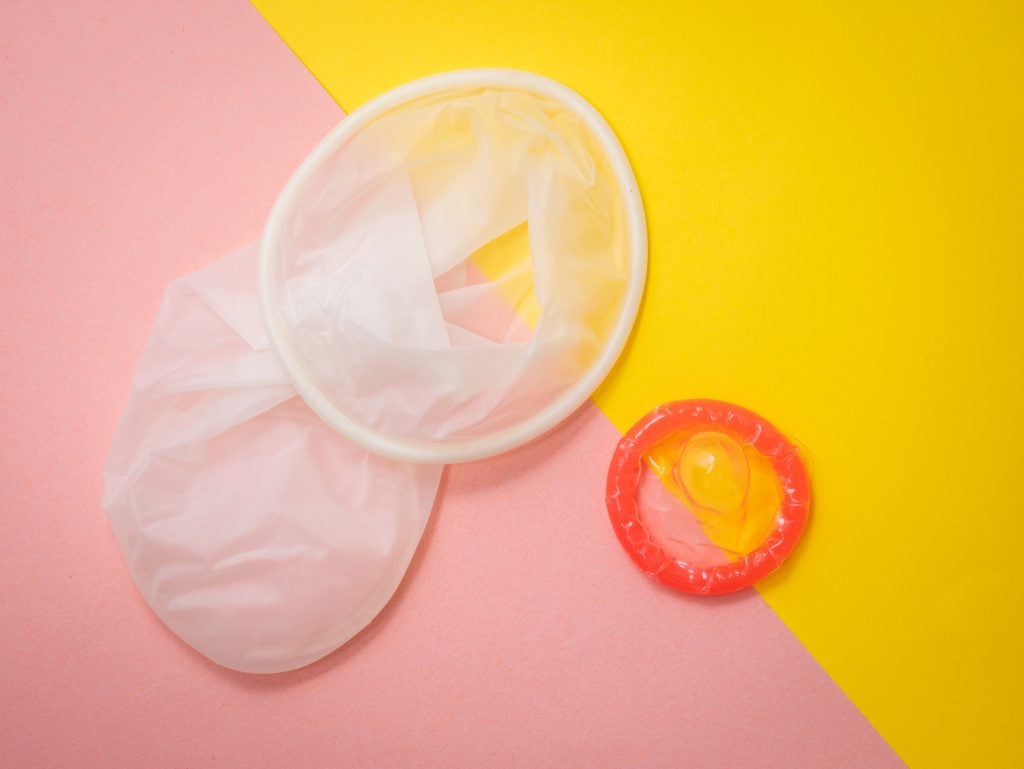Sexual intercourse refers to the penetrative sexual act in which a male’s penis enters a female’s vagina. Sexual intercourse can also be called coitus, copulation, penile/vaginal sex, or P/V sex. Sexual intercourse can only occur if both partners have clearly consented to the act. If penetration occurs with a non-consenting person, it is called rape. It is important to have clear and consistent consent throughout the entire sexual act. A male or female condom, paired with a hormonal form of birth control, should be used to protect both partners from the spread of sexually transmitted infections (STIs) and unwanted pregnancy.
Table of Contents
Why Engage In Sexual Intercourse?
All partners have different reasons for engaging in penile/vaginal sexual intercourse. This article will focus on three main reasons for having intercourse: pleasure, intimacy, and conception.
Sexual Intercourse For Pleasure and Intimacy

Intercourse can create both pleasure and intimacy, but these feelings may occur at different levels of intensity during certain types of encounters. For example, a male and female in a long-term monogamous relationship may engage in sexual intercourse for reasons more related to intimacy, or a feeling of closeness. Of course, physical pleasure most often plays a part in that encounter as well. However, intimacy may not play as big of a role in a situation where there is an absence of romantic feelings between the partners involved. For example, a one-time hookup with an acquaintance or stranger may be for the sole purpose of feeling sexual pleasure.
Sexual Intercourse With The Intent to Conceive
Any time a male and female engage in sexual intercourse, there is a chance that pregnancy will occur. While it is important to use birth control when trying to avoid pregnancy, at some point in life you may decide that it is time for you and your partner to conceive a child. Aside from female sterilization, all forms of birth control are completely reversible. So, once use of the birth control is discontinued, the ability to conceive will return. It is important to communicate effectively with your partner if you feel that you are ready to have a child. It is best to bring a child into a stable, loving environment. Until both you and your partner are excited and ready to take on the responsibilities that come with pregnancy and raising a child, it is important to continue using birth control during sex.

If you or your partner are infected with a sexually transmitted infection (STI), it may be difficult for a successful pregnancy to occur. There are many possible risks involved when a female has an STI during pregnancy, including an increased risk of miscarriage and transmission of the STI to the fetus or newborn.1 It is important to work closely with a healthcare provider to take all possible steps to protect the pregnant female and the growing fetus from the harmful effects of the STI. Click here if you think that you might have an STI.
If you or your partner does become pregnant, there are fun and safe ways to maintain a healthy sex-life during the pregnancy. Click here to read about safe sex positions for pregnant couples.
How to Engage In Safe Sexual Intercourse

When engaging in sexual intercourse, it is important for both partners to take precautions against unwanted pregnancies and the spread of sexually transmitted infections (STIs). Various forms of birth control can be used to prevent unwanted pregnancy from occurring. We recommend pairing a hormonal form of birth control, such as birth control pills or an implant, with a barrier method, such as a male condom or a female condom. In addition to providing protection against unwanted pregnancy, male and female condoms are also the only way to effectively prevent the spread of STIs. Never use two condoms at once, as one condom on top of the other increases friction and the likelihood of the condoms tearing.

It is smart to get tested regularly for STIs, especially if you are having sex with multiple partners. We advise that both partners be aware if their STI status and share that information with their partner before engaging in any type of sexual activity. For strategies on how to ask a partner to get tested, click here.
How To Have Intercourse

Once clear and uncompromised consent has been established and effective STI and birth control safeguards are in place, foreplay can begin. Foreplay can include emotionally and physically intimate acts between two or more people, which often precede sexual activity. Kissing, grinding, fingering, oral sex, using sex toys, massage, and stimulating erogenous zones can all be a part of foreplay. Establishing consent and engaging in safe sex practices, such as putting a condom on the male’s penis, can even be incorporated into foreplay. Upon sexual arousal, a female’s vaginal canal prepares for the entrance of the penis by secreting lubrication, lengthening, and expanding. When a male becomes aroused, his penis will become erect. The amount of time spent on foreplay changes both the lubrication level and the shape of the female’s vagina. If a female is not properly and completely aroused, she may not be lubricated enough, which can cause both her and her partner to feel more friction, which can lead to painful penetration or even bleeding from small tears in the vaginal walls. Some women naturally become less lubricated than other, even with plenty of foreplay. A personal lubricant can be used to make intercourse more enjoyable for both partners.
Positions

Sexual intercourse can be experienced in many different positions. We advise you to start out simple, and then with practice to move into trying some of the more difficult positions. There are simple positions, such as missionary, and more complicated positions, such as the pretzel. Read about these positions, and many more, by clicking here.
Supplemental Stimulation
Penile-vaginal intercourse alone can feel extremely pleasurable, but stimulating the nipples, the clitoris, the testicles, and even the anus can help increase sexual satisfaction for both partners.

Although research regarding the Gräfenberg spot (or G-spot) remains debatable, stimulation of the G-spot, which is on the anterior (or front) wall of the vagina, may lead to an orgasm in some women. The G-spot is an area of heightened sensitivity that is typically located about one to two inches deep in the vagina.2 Stimulation of the G-spot does not result in orgasm in all women, and it may actually trigger the urge to urinate, which can be distracting. However, if stimulation continues after the sensation to urinate is triggered, one may experience an orgasm which has been categorized to have a different quality than an orgasm produced through clitoral stimulation alone.2

A male’s prostate gland can also be sexually stimulated. The best way to stimulate the prostate is to insert a well-lubricated index or middle finger to the second knuckle inside of the anus and use a “come hither” motion; similar to the way the female G-spot is stimulated. As with the female G-spot, stimulation of the male G-spot may at first feel strange or unfamiliar, but with time, this feeling is often replaced with intense pleasure that feels different than stimulation of the penis alone. Additionally, there are many kinds of vibrators and dildos that are made specifically to pleasure the prostate may be of use when stimulating the prostate, and that can be fun to incorporate into foreplay or sex.
Other erogenous zones, such as the back, neck, earlobes, feet, nipples, or testicles can be stimulated using fingers, a vibrator, or a partner’s tongue. Explore your partner’s body to discover their sensitive spots. Every person has different preferences, so it is important to be respectful by asking if it is okay to touch certain areas and communicating before, during, and after the sexual experience.
Sex During Menstruation

It is common for people to avoid engaging in sexual activities during menstruation. Menstrual blood, tampons, sanitary pads, or other menstrual products can potentially make partners feel embarrassed or uncomfortable. However, there can be benefits to having sex during menstruation, and there are many ways to avoid messes and stains. When practiced safely, sex during menstruation can be a safe, natural act that causes no harm to either partner. Click here to read about having sex while a partner is menstruating.
Alternative Penetrative Sexual Activity

There are many other ways to engage in penetrative sexual acts. A person can insert fingers, a dildo, a vibrator, or another sex toy into a female partner’s vagina. Sex toys or a penis can also be inserted into a male or female partner’s anus.
Cultural Views Towards Sexual Intercourse
Every culture has a different view of sex, virginity, and relationships. Click here to read about the cultural significance of an intact hymen, which contrary to some beliefs, does not actually indicate whether a female has had sex or not. Click here to read about other culturally based differences regarding sex.
Concluding Remarks

When done correctly, sexual intercourse can be a very pleasurable experience between two partners. Always keep communication open with your partner throughout the entire experience to ensure that there clear and consistent consent and that both partners are comfortable. It is important to take precautions against unwanted pregnancy and the spread of STIs by using a hormonal form of birth control paired with a male or female condom. There are many different positions to try out with a partner, and here at SexInfo we offer many suggestions to help spice up your sex life! If you have any questions, feel free to use our Ask The Sexperts feature!
References
1. “How Do Sexually Transmitted Diseases and Sexually Transmitted Infections (STDs/STIs) Affect Pregnancy?” U.S National Library of Medicine. U.S. National Library of Medicine, 2012. Web.
2. LeVay, Simon, Janice I. Baldwin, and John D. Baldwin. “Women’s Bodies.” Discovering Human Sexuality. 3rd ed. N.p.: Sinauer Associates, 2015. 29-32. Print.
Last Updated: 30 November 2016.
